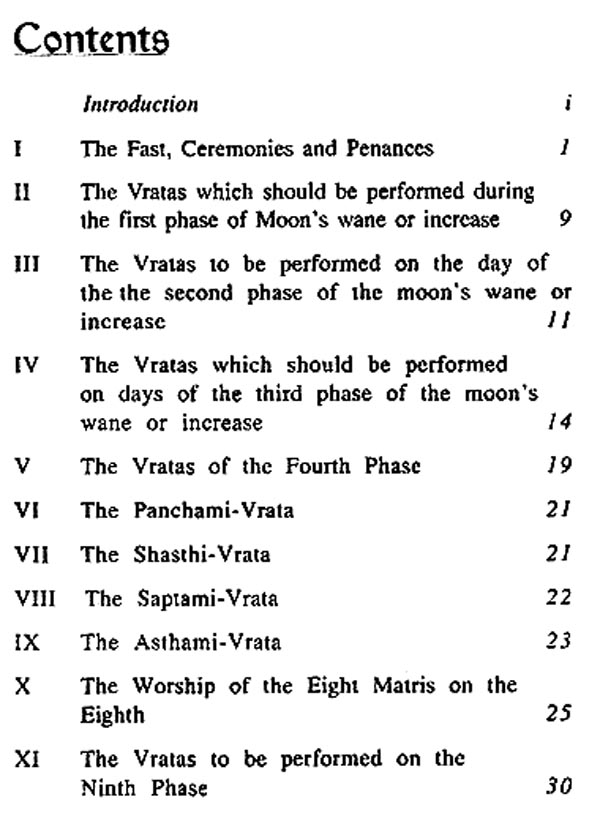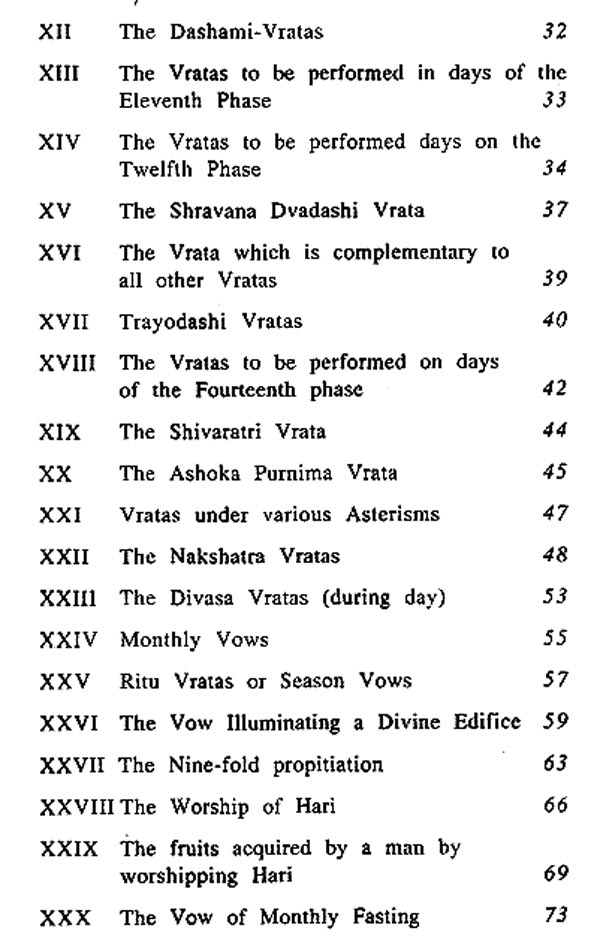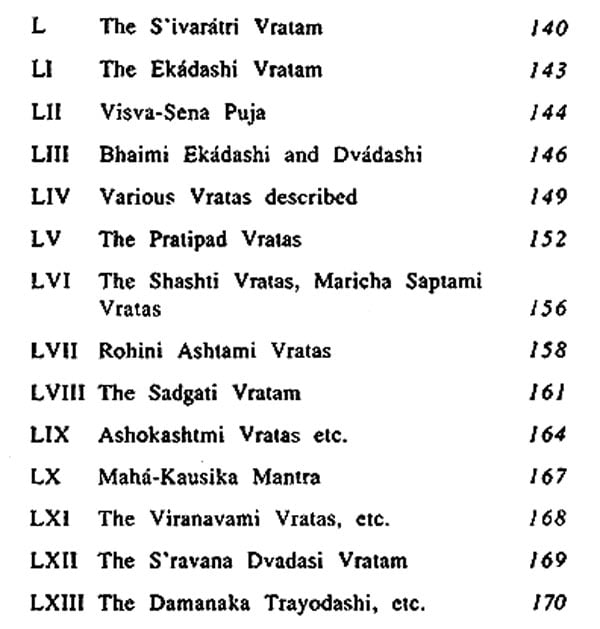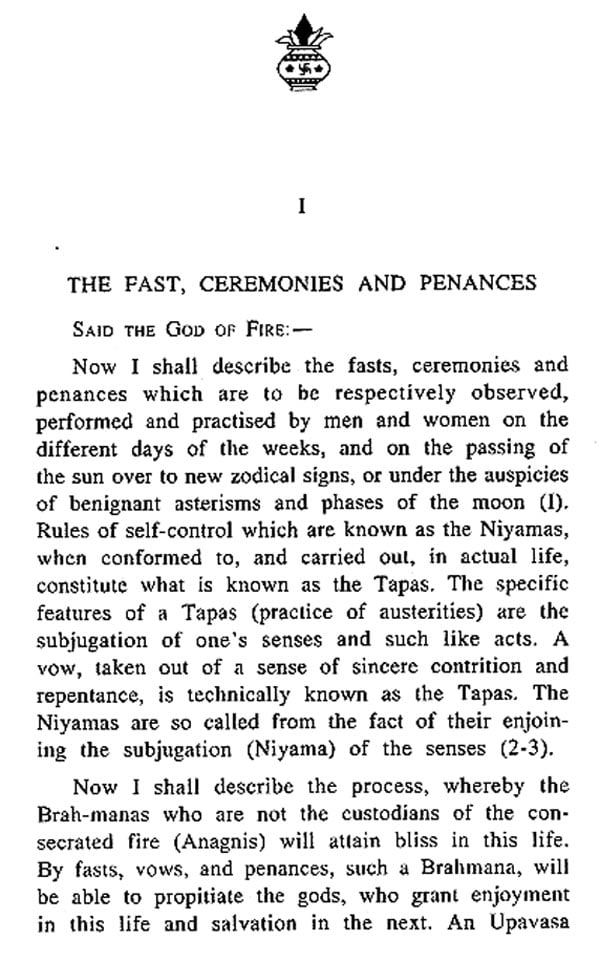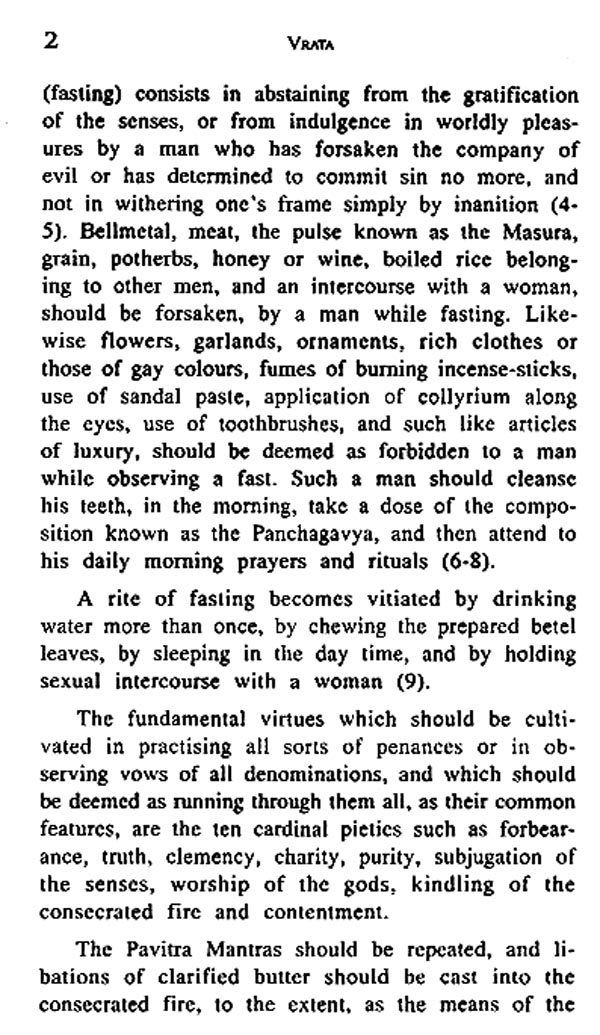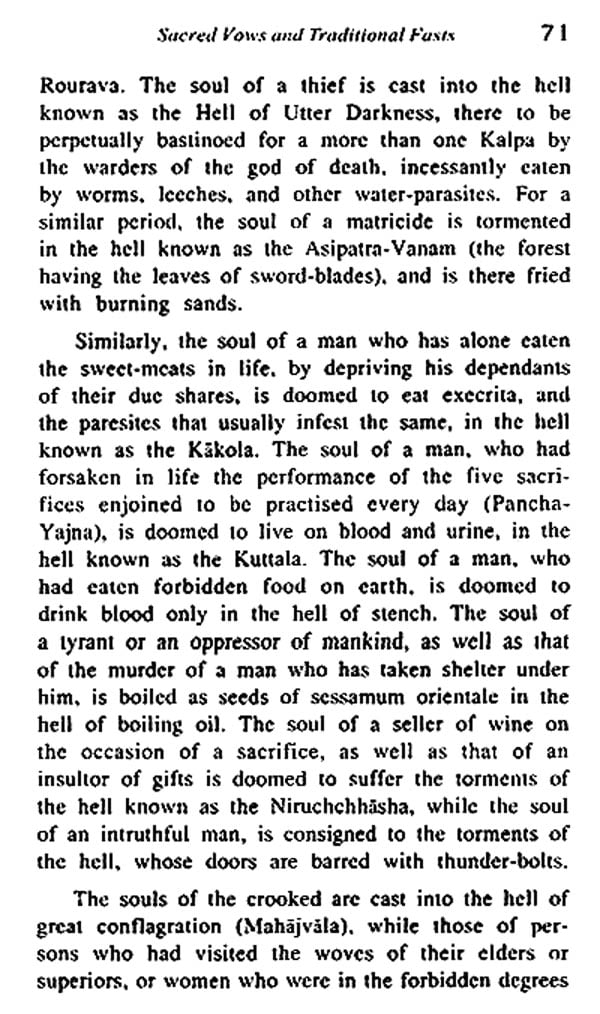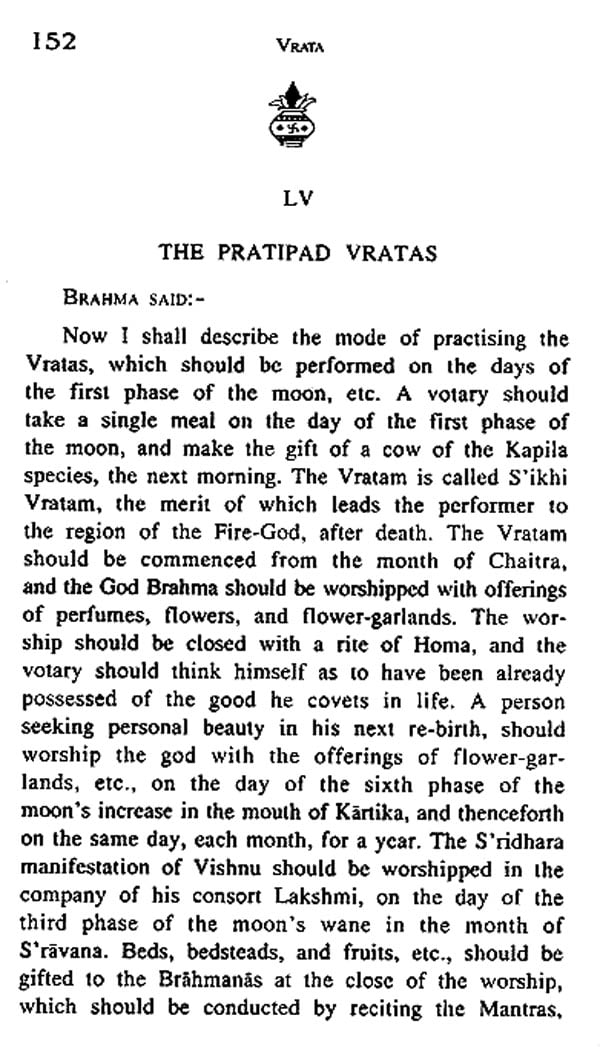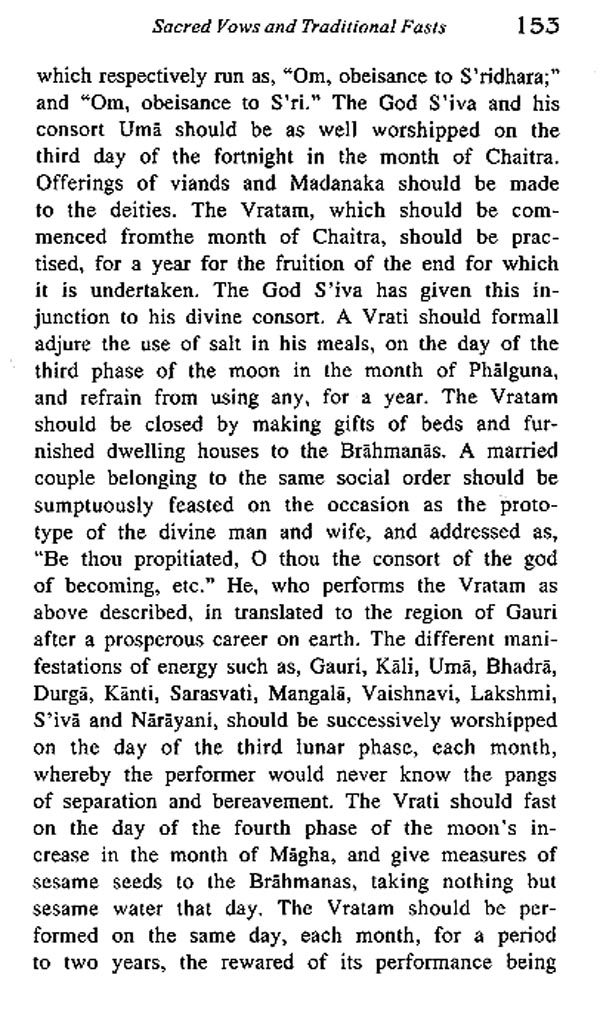
Vrata (Sacred Vows and Traditional Fasts)
Book Specification
| Item Code: | NAV274 |
| Author: | M.N. Dutt |
| Publisher: | Cosmo Publications, New Delhi |
| Language: | English |
| Edition: | 2002 |
| ISBN: | 8129100185 |
| Pages: | 170 |
| Cover: | PAPERBACK |
| Other Details | 8.50 X 5.50 inch |
| Weight | 230 gm |
Book Description
THE HINDUS are a profoundly religious people. Their goal of life is Self-realisation or the attainment of God-consciousness. A religion of some kind they must have-a religion which will stir the depths of the heart and give room for the exercise of faith, devotion and love.
All Hindu festivals have a deep spiritual import or high religious significance. All great Hindu festivals have religious, social and spiritual elements in them. In every festival there is bathing in the morning before sunrise in the river or tank or well. Every individual will have to do some Japa, prayer, Kirtan, recitation of Sanskrit verses and meditation, apart from the ever important Fasting.
This book explains the significance and the philosophy of many of the fasts as enshrined in the pauranic scriptures and their practice. Most of the texts included appear in the English language for the first time.
Brennand in his Hindu Astronomy says that "the early religion indeed of the Hindus like other religions had as we know a close intimacy with time and seasons" (p25). Some of the popular and general Hindu Holidays, and the fasts related to them, seem to have been based on changes of the season and other on natural phenomena. Ganesh and Gauri for instance represent the end and resurrection of the season so do Vatsavitri, Diwali, and Holi. Vasant-Panchami marks the phenomenon of the rising Sun driving or dispersing fog Mahasivaratri marks the night on which the Mrig constellation or the Orion is seen in its best aspect. Somavati represents the absence of Soma (the moon) on a Monday. Navanna-pumima implies as its name shows the day on which the first meal of the new corn is to be tasted. These are possibly the most ancient ceremonials and signify the reverence felt at the change of the season by our ancient ancestors. The worship of the symbols of creative power represented by Shiva and Parvati are more modem as my comments on the Mahashivaratri shows that Shiva, Parvati, Nandi the Bull of Shiva, the Lion of Parvati and even Ganesh of the Shaivite group are taken from the signs of the Zodiac.
The other set the holidays, and the related fasts, are mythological and historical. These are birth-days of different heroes or gods such as Rama-Navami, Janamashatmi, and the Jayantis or birthdays of Hanuman, Parshurama, Narasimha, etc. The original shastras (the Vedas) suggest only a few ceremonials, the puranas add a large number and the traditions supply the largest group. It is the second class of ceremonial fasting which this book focuses upon. The ceremonial aspects related to the puranas arc probably the least understood by the common men and women as these are mostly surrounded in allegory and symbolic language, as we read in Brennand's Hindu Astronomy, "The knowledge acquired by the Hindu astronomers was guarded with greatest care as sacred and was supposed to be so secret that it was not even known to the Gods. It was not communicated to the common people and being regarded as a revelation, to inspire Saints, was only to be divulged to disciples similarly inspired (p27). They were to be communicated only as myths and allegories with hidden meanings." "The astronomical mythology of the Hindus, grotesque and barbarous as some of their stories may appear, had within it much that was valuable in point of instruction" (p. 323). (The italics are mine.) Some of these folklore stories will show that they are intended for recording discoveries in astronomical and other natural phenomena. When writing was not known or when it was not communicated to the masses, stories were used instead. The folklore of Kokila-vrat, Kapila-Shasti, and the tortoise incarnation are examples. The shapes given to the constellations mentioned in them, served as hieroglyphics to fix them into the memory. They have served to transmit from generation of the seasons. In this connection Lord Arundell of Wardour records in his book called "Tradition principally with reference to the Mythology and the law of Nations" (page 122), that "what strikes one most forcibly in contemplating these ages, is the contrast between their intellectual knowledge and their mechanical and material contrivances for its application, when paper, parchment, or even the smoothed hides, as adapted for the purposes of writing, were unknown." "This establishes the retentive strength of their memory, and their intellectual familiarity with great truths." According to the Chinese accounts, the works of Confucius were proscribed, after his death, by the Emperor Chi-Hoangri, and all the copies were recovered from the dictation of an old man who had retained them in memory," (like the Vedas). In the article in the Cornbill Magazine, November 1871, containing a valuable collection of South Indian folk songs, it is said at page 577 that "they are handed down from generation to generation entirely vive-voce, and form the minstrels have passed into public use." So are these folklore stories and songs about Hindu Holidays and ceremonials. In many instances they historical facts intermixed with supernatural fiction. They, moreover, record the manners, customs, and beliefs of the time. Compared with similar stories of the different provinces they yield interesting material for the comparison of mariners and customs of different societies at different stages of their existence.
**Contents and Sample Pages**
